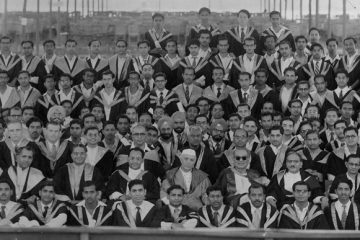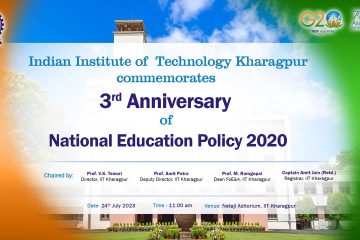
Economic Times Outlook Daily World Inc42 Hindustan Times
Like many other sectors, Artificial Intelligence is all set to impact jurisprudence. In countries such as USA, Britain, Japan, Singapore and Australia, it is already changing the way lawyers do business. AI is being used to perform legal research, review documents during litigation and conduct due diligence, analyse contracts to determine whether they meet pre-determined criteria and to even predict outcomes. AI is yet to sufficiently penetrate the legal field in India though. But that may soon change.
 At IIT Kharagpur, the Department of Computer Science and Engineering is conducting a slew of research work on the application of AI in the legal field. A recently released paper by the research group on the ‘Identification of Rhetorical Roles of Sentences in Indian Legal Documents’ won the prestigious ‘Best Paper Award’ at JURIX 2019, the International Conference on Legal Knowledge and Information Systems, held in Madrid during December 11-13, 2019. For more than 30 years, the annual JURIX conference has provided an international forum for research on the intersection of Law, Artificial Intelligence and Information Systems.
At IIT Kharagpur, the Department of Computer Science and Engineering is conducting a slew of research work on the application of AI in the legal field. A recently released paper by the research group on the ‘Identification of Rhetorical Roles of Sentences in Indian Legal Documents’ won the prestigious ‘Best Paper Award’ at JURIX 2019, the International Conference on Legal Knowledge and Information Systems, held in Madrid during December 11-13, 2019. For more than 30 years, the annual JURIX conference has provided an international forum for research on the intersection of Law, Artificial Intelligence and Information Systems.
The research team at the CSE Department has used a novel method to automate the reading of a legal document by using a more evolved Machine Learning technique. Instead of the usual ‘Conditional Random Fields’ that use handcrafted features to train the machine, they have used two deep neural models to understand the rhetorical roles of sentences in a legal case judgment.
Automatically understanding the role of sentences in a legal case judgment is important as it can help in several downstream tasks such as summarization of legal judgments, legal search, case law analysis and other functions necessary for legal research. For a country like India, which uses a common law system that prioritizes the doctrine of legal precedent over statutory law, and where legal documents are often written in an unstructured way, the difference AI can bring is phenomenal, says Prof. Saptarshi Ghosh of the Department of Computer Science and Engineering, who is leading the team.
 Taking judgments from the Supreme Court of India, the team has segmented the 50 documents by labeling sentences using multiple human annotators (three senior law students from IIT Kharagpur’s Rajiv Gandhi School of Intellectual Property Law), performing extensive analysis of the human-assigned labels and then developing a high quality gold standard corpus to train the machine to carry out the task. “We use this annotated dataset in our experiments to automate the task of assigning semantic roles to sentences,” says the paper.
Taking judgments from the Supreme Court of India, the team has segmented the 50 documents by labeling sentences using multiple human annotators (three senior law students from IIT Kharagpur’s Rajiv Gandhi School of Intellectual Property Law), performing extensive analysis of the human-assigned labels and then developing a high quality gold standard corpus to train the machine to carry out the task. “We use this annotated dataset in our experiments to automate the task of assigning semantic roles to sentences,” says the paper.
As mentioned before, prior attempts to automate identification of rhetorical roles of sentences in legal documents have depended on handcrafted features such as linguistic cue phrases indicative of a particular rhetorical role. These features depend on legal expert knowledge which is expensive to obtain. Besides, these features are often developed keeping in mind one specific domain. The neural methods used by Prof. Ghosh’s team automatically learn the features given sufficient amount of data and can be used across domains.
 The two models used are – Hierarchical BiLSTM model and Hierarchical BiLSTM-CRF model. The models, which undertake a seven-class labeling, are seen to perform better in the task of classification than baseline ML methods that use handcrafted features. The performance of the models is compared based on the 50 manually annotated documents by using standard metrics of evaluation for the performance of the algorithms. The results show that the “latent features learnt by the neural models are better than the hand-crafted features used in prior works,” says Prof. Ghosh. Not only that, the comparison between the automated and human-generated labellings show that the former reflect the same confusion around labels in which there is confusion among the human annotators. In other words, using the neural models, the machine correctly identifies the subjective rhetorical roles of sentences.
The two models used are – Hierarchical BiLSTM model and Hierarchical BiLSTM-CRF model. The models, which undertake a seven-class labeling, are seen to perform better in the task of classification than baseline ML methods that use handcrafted features. The performance of the models is compared based on the 50 manually annotated documents by using standard metrics of evaluation for the performance of the algorithms. The results show that the “latent features learnt by the neural models are better than the hand-crafted features used in prior works,” says Prof. Ghosh. Not only that, the comparison between the automated and human-generated labellings show that the former reflect the same confusion around labels in which there is confusion among the human annotators. In other words, using the neural models, the machine correctly identifies the subjective rhetorical roles of sentences.
Prof. Ghosh’s team consists of his students, Paheli Bhattacharya and Shounak Pal, as well as researchers from the Tata Research Development and Design Centre, Pune, and Swansea University, United Kingdom. Automating the identification of rhetorical roles of sentences in legal judgments, which will go a long way to aid legal research, is only one facet of the team’s efforts to enhance the application of AI in the legal field. Prof. Ghosh’s team, particularly Paheli, is using network and text analysis to understand if two legal documents are similar – which will further enhance the automation of legal research.
 “We are trying to build an AI system which can give guidance to the common man about which laws are being violated in a given situation, or if there is merit in taking a particular situation to court, so that legal costs can be minimized. Together with experts at RGSOIPL, we will also try to use AI to investigate pendency in Indian courts and its solution,” says Prof. Ghosh, who says that given that IIT Kharagpur has its own law school, it is uniquely suited to carry out research along these lines.
“We are trying to build an AI system which can give guidance to the common man about which laws are being violated in a given situation, or if there is merit in taking a particular situation to court, so that legal costs can be minimized. Together with experts at RGSOIPL, we will also try to use AI to investigate pendency in Indian courts and its solution,” says Prof. Ghosh, who says that given that IIT Kharagpur has its own law school, it is uniquely suited to carry out research along these lines.
The project is being supported by the Science & Engineering Research Board (SERB) of the Department of Science and Technology, Government of India, under the project, ‘NYAYA: A Legal Assistance System for Legal Experts and the Common Man in India’. The project, which started in June 2019 and will continue till 2022, is being conducted jointly by IIT Kanpur and IIT Kharagpur.



